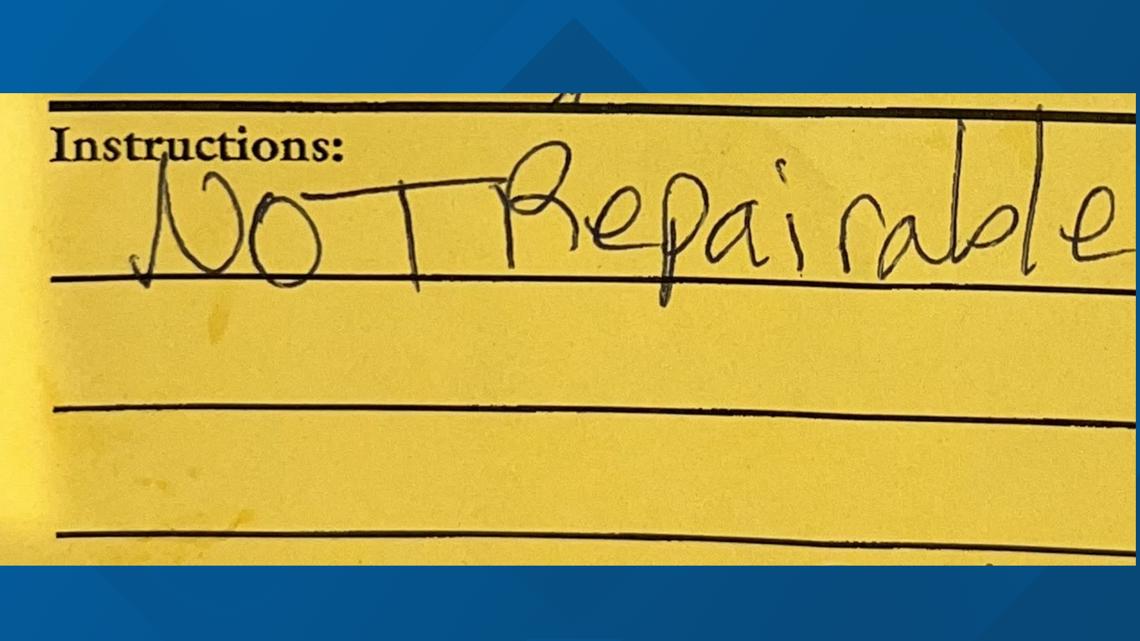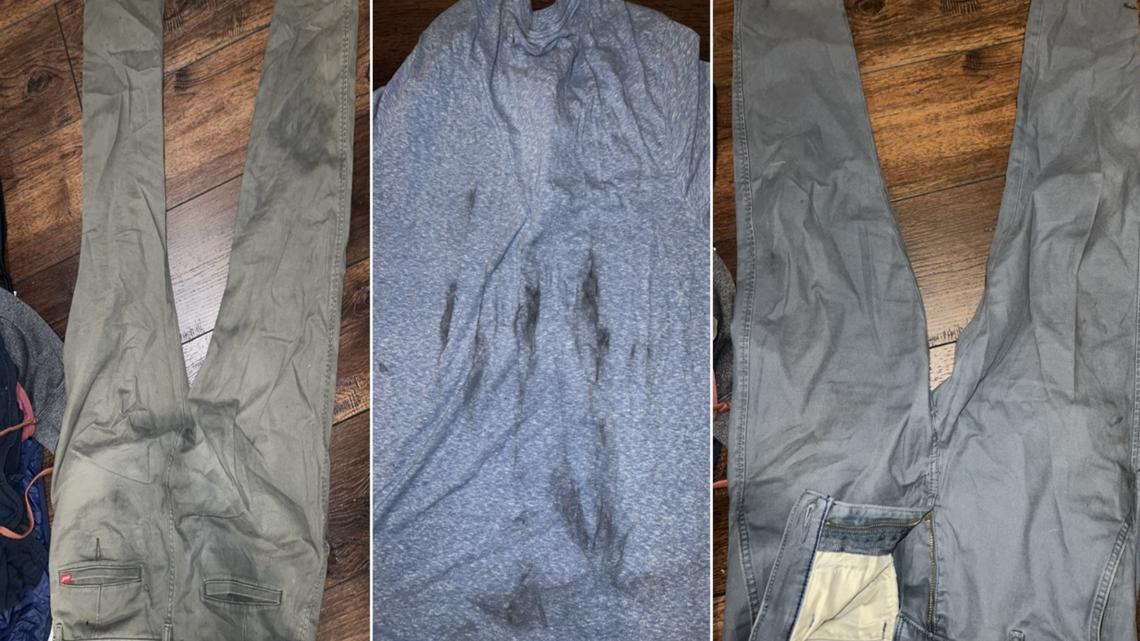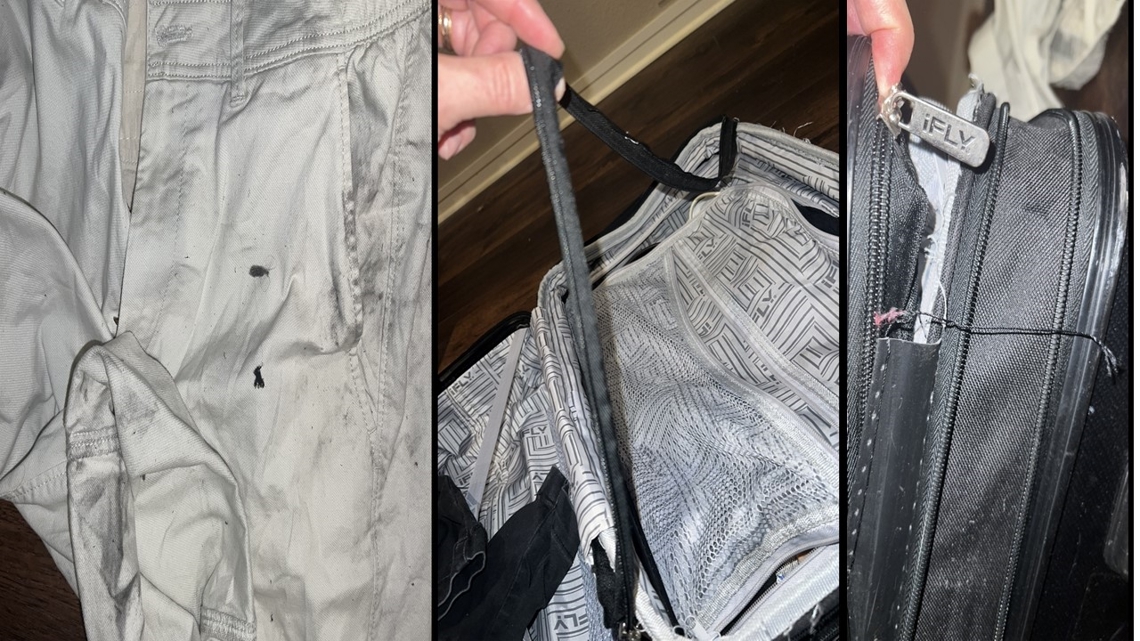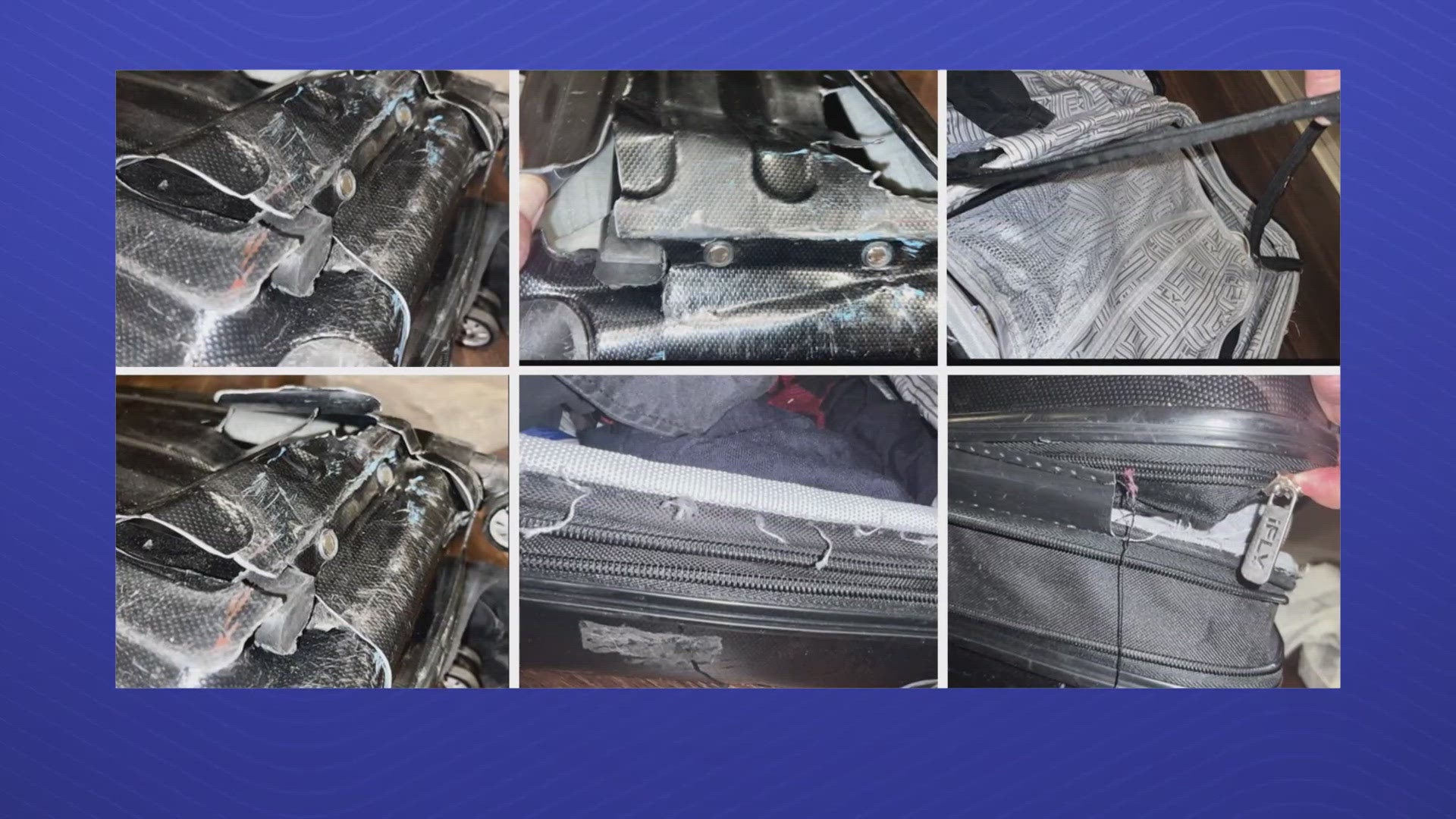DALLAS — Last month I returned from a trip to Europe.
Then, three full days later, my bag finally returned, too.
But it was delivered inside a plastic bag.
Luggage destroyed, contents looked run over
That plastic came in handy because my luggage was destroyed. It could no longer close. And even if it could, it was crushed in such a way that there were holes in the exterior shell that would’ve let contents inside spill out anyway.
By the way, much of my stuff did apparently fall out of the bag while it was in the airline’s custody. I know that because some items, like socks, no longer had a matching twin. Also, many articles of my clothing had black marks and debris all over them that made them look like they had been run over or chewed up by some very dirty machinery.
As a journalist, I asked the carrier, Air France, a lot of questions for this story. They didn’t respond.
On a parallel track, as a passenger, I asked for compensation for my losses. That included having to prove that my bag was damaged even though they sent it to me so badly busted that it could only be held together with the help of that plastic bag.


Having to prove the case about the suitcase they damaged
The airline wanted pictures. I had lots of those. But to get them into the airline’s portal, all the photos were required to fit into a file size of 9 MB, which is not very large.
A tip: If you run into something like this as a consumer, there are programs that will reduce the file size of an image.
I just chose to make PowerPoint slides where I included multiple images on each slide and then converted each slide into a picture that wasn’t a large file. Even with the pics (and again, the knowledge of the crushed suitcase they sent to me), the airline required that I check with a luggage repair shop about just getting it fixed.
There are shops that will give you a free estimate. The determination for mine was very quick. The repair tech created an estimate that said abruptly and emphatically “NOT Repairable!”
Also, this was critical to the process: They wanted to see my luggage claim tag to help prove it was mine. Many of us toss those out after we leave the airport. Save those for a bit!


Their offer of reimbursement gave me a big concern
Thankfully, most of my possessions that were recovered and delivered to me were able to be cleaned up after multiple wash cycles. After a lot of back and forth with the airline, almost a month later they have now agreed to reimburse me for the things that were lost or destroyed.
Here’s the thing about that payment though. After I gave them custody of my bag and such destruction resulted, they wanted me to entrust to them my bank name, bank country, account holder name, account number, and routing number.
And they wanted all that sensitive information by email so they could make a direct deposit. How about I just put all that critical financial info into my badly busted suitcase and just drag it around an airport to see if it all stays in?
Emailing those critical details seemed like an awful idea.
Indeed, the credit reporting agency Experian specifically warns consumers about sharing those details: “If these numbers get into the wrong hands, you could fall victim to severe financial fraud. If someone has your bank account and routing number, they could make unauthorized ACH transfers and payments, create counterfeit checks and even launder money through your account.”
So thanks, but I will take a paper check delivered to me (hopefully that will arrive in better shape than my poor suitcase did).


New rules aim to help airline consumers get refunds
Now, the worst part of all this - well the third worst part right after my bag was crushed and my stuff was apparently run over - is that all this didn’t happen on or after October 28 of this year. That is when strict and sweeping new refund rules go into effect.
In the case of my suitcase, it would require the airline to also give me back any fee I paid to take my baggage on the plane in the first place since it arrived three days late.
The new rule says airlines have to refund baggage fees if luggage is more than 12 hours late for a domestic flight and more than 15 to 30 hours for international flights, depending on where the flight originated.
I’m definitely not the only one with bag baggage. The U.S. Department of Transportation keeps statistics on these things. Just in the first quarter of 2024, the top 10 U.S. airlines and their codeshare partners handled 116,678,542 pieces of luggage! And most of the time it went well. But, just in those three months, they mishandled 678,931 bags, according to the department.
This new rule aims to address those problems and it will require carriers to quickly and automatically reimburse you for other delays and cancellations or for services they fail to provide.
Here is a quick explanation from the department on what the new rules will cover. If you want to read much further into the details of the new rules, this is the full text.
Additionally, if you don’t feel like you are making headway after making a complaint to an airline about a consumer issue, you can file a formal complaint here with the U.S. Department of Transportation.


More info from USDOT on luggage reimbursement
Since my issue was with a delayed (and crushed) bag, I asked the department for more information on that specifically, and here is the additional information they sent:
“Airlines are responsible for reimbursing a passenger for direct or consequential damages resulting from the damage or delay in delivery of passengers’ checked bags. For domestic flights, DOT regulation allows airlines to limit their liability for a lost, damaged, or delayed bag to $3,800 per passenger.
For most international flights, a treaty called the Montreal Convention applies to the carriage of baggage. The maximum baggage liability for flights covered by the Montreal Convention is currently 1,288 Special Drawing Rights (approximately $1,700.00 US) per passenger. This is the most that airlines must pay a passenger for a lost, damaged, or delayed bag. Airlines are free to pay more than the limits but are not required to do so.
In addition, current DOT regulations require airlines to reimburse passengers for any fee charged to transport a bag if that bag is lost. This is a separate requirement in addition to the compensations that airlines must pay for delayed, damaged, lost, and pilfered bags. DOT’s recent final rule on Refunds and Other Consumer Protections imposes a new requirement on airlines to refund the checked bag fees paid by consumers when their checked bags are significantly delayed. According to the final rule, airlines are required to comply with this requirement on October 28, 2024. Before that date, airlines can voluntarily issue refunds of bag fees for significantly delayed bags.
When a checked bag does not arrive at its destination, passengers should file a baggage claim with their airline as soon as possible and stay in close communication with the airline after filing a claim and during the baggage location process. If a passenger experiences difficulty related to mishandled baggage or compensation for mishandled baggage, then that passenger should file a complaint with the airline. DOT requires airlines to acknowledge consumer complaints within 30 days of receiving them and to send consumers written responses addressing these complaints within 60 days of receiving them. This includes complaints concerning checked luggage.”

